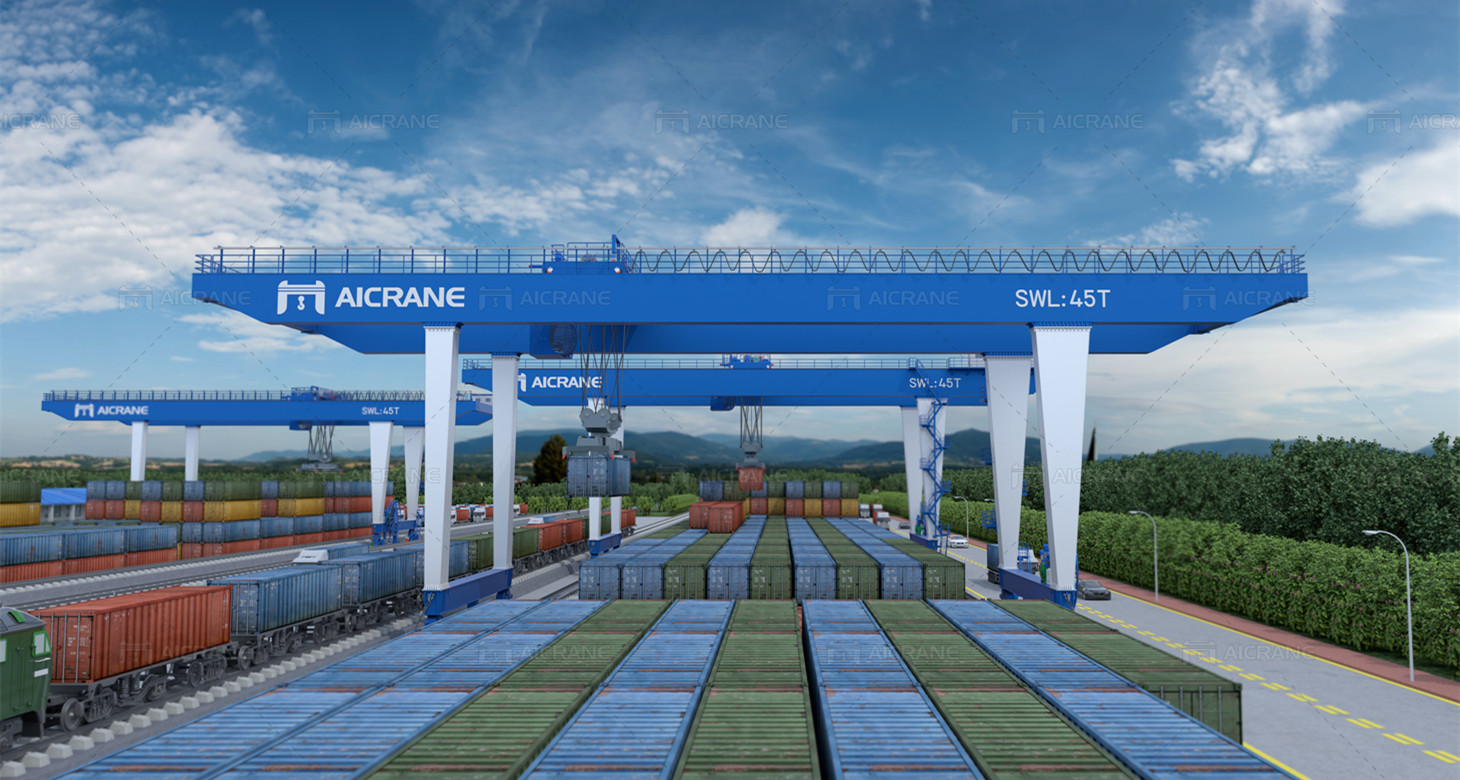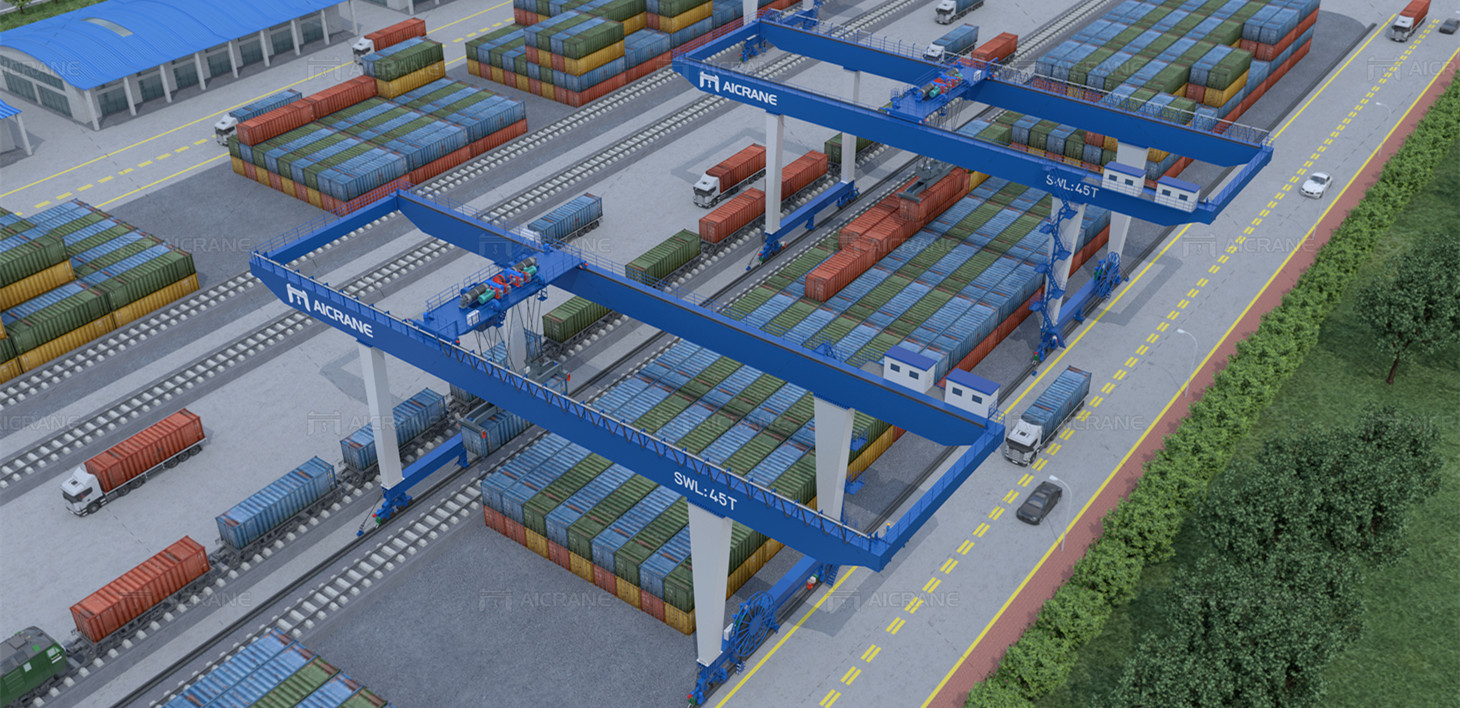Selecting the appropriate container gantry crane capacity is a critical decision for port operators and logistics companies, as it directly impacts the efficiency, safety, and cost-effectiveness of container handling operations. The capacity of a container gantry crane determines the maximum weight it can lift and the size of the containers it can handle. Choosing the right capacity involves a thorough analysis of the specific needs of the operation, including the types of containers being handled, the volume of traffic, and the future growth potential of the port. This guide will explore the key factors to consider when selecting the suitable container gantry crane capacity for your operation.

Understand the Basics of Container Gantry Crane Capacity
Container gantry cranes, also known as ship-to-shore (STS) cranes or rail-mounted gantry (RMG) cranes, are designed to lift and transport shipping containers within ports and container terminals. The capacity of these cranes is typically measured in terms of the maximum weight they can lift, often expressed in metric tons. For example, a crane with a capacity of 40 tons can safely lift a fully loaded 40-foot container, which is the most common size used in global shipping.
Lifting Capacity: The primary consideration is the maximum lifting capacity, which determines the heaviest load the crane can handle. This includes not only the weight of the container itself but also any additional weight from cargo or attachments.
Outreach and Height: The crane’s capacity is also related to its outreach (the horizontal distance it can cover from the base) and height (the vertical distance it can reach). Larger ships with more container rows require cranes with greater outreach and height capabilities.
Span and Clearance: The span of the crane, or the distance between its supporting legs, and the clearance (the height of the space under the crane) also influence the crane’s operational capacity, as they determine the size and number of containers that can be handled simultaneously.
Assess Your Operational Requirements
The specific requirements of your operation will dictate the appropriate container gantry crane capacity. Consider the following factors when evaluating your needs:
Container Types and Sizes: Identify the types and sizes of containers most commonly handled in your port. Standard containers come in 20-foot and 40-foot lengths, but specialized containers, such as high cubes, refrigerated units (reefers), and tank containers, may require additional capacity due to their dimensions or weight.
Container Weight: Assess the average and maximum weight of the containers your operation handles. Fully loaded containers can weigh up to 30-40 tons, depending on the cargo. Ensure the crane capacity exceeds the maximum expected container weight to prevent overloading and ensure safe operation.
Volume of Traffic: Evaluate the volume of containers that pass through your port on a daily, weekly, or monthly basis. High-traffic ports may require cranes with higher capacities to handle larger volumes of containers efficiently, reducing wait times and increasing throughput.
Operational Environment: Consider the physical layout and constraints of your port or terminal. Factors such as the available space, the distance between container rows, and the proximity to water or rail lines will influence the type and capacity of crane that is most suitable.
Consider Future Growth and Expansion
When selecting container gantry crane capacity, it is essential to consider not only your current needs but also future growth and expansion. Investing in a crane with a slightly higher capacity than currently required can provide flexibility and accommodate increases in container traffic or changes in container sizes over time.
Scalability: Choose a crane with the potential for scalability. For instance, if you anticipate handling larger containers or higher volumes in the future, a mobile gantry crane with additional capacity can help avoid the need for a costly upgrade or replacement.
Technological Advancements: Consider how future technological advancements may impact your operation. Modern container gantry cranes are increasingly automated and equipped with smart features such as remote monitoring, automated stacking, and energy-efficient systems. Investing in a crane with these capabilities can future-proof your operation.
Port Expansion Plans: If your port or terminal has expansion plans, ensure that the crane capacity aligns with these plans. For example, if new berths are being added or larger vessels are expected to call at the port, a crane with higher capacity and greater reach will be necessary.

Evaluate Cost Considerations
While it is important to select a container gantry crane with adequate capacity, it is equally important to consider the cost implications. Larger, higher-capacity cranes typically come with higher upfront costs, as well as increased operational and maintenance expenses.
Initial Investment: Higher-capacity cranes require a larger initial investment. However, this cost must be balanced against the potential benefits of improved efficiency, increased throughput, and reduced downtime. Consider the total cost of ownership (TCO), including installation, operation, and maintenance costs.
Operational Efficiency: A crane with higher capacity can reduce the number of lifts required to handle a given volume of containers, potentially lowering labor costs and increasing operational efficiency. However, ensure that the crane’s capacity is not excessively higher than needed, as this could result in unnecessary expenses.
Maintenance and Upkeep: Larger cranes with higher capacities may require more frequent maintenance and have higher upkeep costs. Assess the availability of spare parts, the ease of access for maintenance, and the long-term reliability of the crane when considering capacity.
Consult with Manufacturers and Experts
Choosing the right container gantry crane capacity is a complex decision that benefits from expert input. Consulting with crane manufacturers, engineers, and port management experts can provide valuable insights into the best options for your specific needs.
Manufacturer Recommendations: Reputable crane manufacturers like Aicrane can provide detailed specifications and recommendations based on your operational requirements. They can also offer customized solutions that match your capacity needs with the specific constraints of your port.
Site Surveys and Feasibility Studies: Conducting a site survey or feasibility study can help identify the optimal crane capacity by assessing the physical layout, environmental conditions, and operational demands of your port. These studies provide data-driven insights that guide the decision-making process.
Peer Consultation: Consulting with other port operators who have similar operations can provide practical insights into the performance and suitability of different crane capacities. Learning from the experiences of others can help you avoid potential pitfalls and make more informed decisions.
Selecting the suitable container gantry crane capacity is a critical decision that affects the efficiency, safety, and future scalability of port operations. By thoroughly assessing your operational requirements, considering future growth, evaluating cost implications, and consulting with experts, you can choose a crane with the right capacity to meet your current and future needs. Investing in the appropriate crane capacity ensures that your port remains competitive, efficient, and capable of handling the demands of modern container shipping.